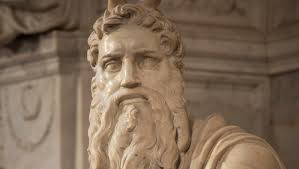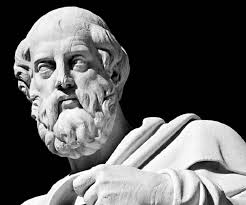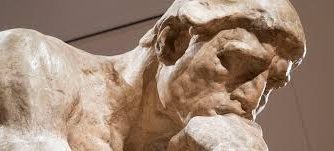Have you ever spent weeks or months exercising following all of the rules of exercise engagement and not made any progress in your training? There may be a reason for that, and it may have to do with how you’re monitoring and setting your exercise heart rate.
Last week we looked at the importance of knowing what your resting heart rate is and how it can be an indicator of your heart health. We also discussed what the standard maximum heart rate and exercise heart rate ranges are, the ones you find most often printed on the treadmill or stationary bike at your gym.
Then I ended the post by saying that the most common formula is often not the most accurate or best way to determine your exercise heart rate. Today I’m going to tell you why and show you how to get the measurement you need.
Exercise heart rate review—
Let’s begin with a short review about what happens to your heart rate during exercise.
Your heart rate usually rises during intense workouts, prolonged long-distance (aerobic) exercise workouts. Your heart’s maximum heart rate is the rate at which your heart is working at its hardest to supply oxygen to your body. In exercise, this is the rate that can only be sustained for several minutes.
Your maximum heart rate is a function of aerobic capacity—the amount of oxygen your body is able to consume, or the heart’s ability to pump oxygenated blood to your muscles. When an exercise physiologist measures it, she’ll write in terms of VO2 max and actually measure the volume of oxygen you move through your lungs during exercise. The more conditioned you are, the higher your VO2 max usually is.
As you exercise and your fitness level improves, the body ramps up in efficiency, at metabolism and everything else it does. Your gastric motility improves—the speed and efficiency at which your body digests and moves food through the digestive tract. Your muscles get stronger and more efficient. Your body actually makes more capillaries in which to circulate oxygenated blood to those muscles, and your lungs become better at moving those oxygenated blood cells through the transport system. (Do any of you remember the People Mover ride at Disneyland? It’s like that. The blood cells line up to load the oxygen and then get whisked away to the distribution sites. The movers are filled to capacity, rather than moving out partially loaded.)
Knowing what your maximum heart rate level should be during exercise is fundamental to setting effective exercise parameters and goals.
If your fitness level is improving, and you really want to keep improving it, how do you calculate your maximum exercise heart rate?
Last week we looked at this scenario:
You go to the gym, hop on a treadmill or stationary bike and see the maximum heart rate formula and exercise intensity graph to indicate where you should be exercising for your age.
The basic formula is: 220 minus your age multiplied by 50 to 70%
So let’s punch in some numbers.
If you’re 40 years old, your max exercise heart rate will be 180 bpm. What does that tell you? It tells you that 180 bpm is the highest heart rate number you should obtain while exercising at your maximum level. But you’ve already seen that the maximum level can only be, and should only be, sustained for no more than several minutes.
So, unless you’re planning to exercise for just two to three minutes, how do you decide what heart rate you should be exercising at?
The percentage number you use really does depend upon what you’re trying to achieve. Do you want to work on your power, the speed you can move a barbell from your chest to an overhead position? Maybe explode from a crouched over position in a 100 meter sprint? Or do you want to get long, lean muscles?
What if you just want to work on your general fitness level, or burn off some of that pesky fat that accumulated when you weren’t looking?
I promise we’ll get into more specifics about what percentage is likely to be best for you, but today we’ll stick to discussions about averages. For most people, they want to aim for 50 to 70% of the maximum heart rate of 180. So the formula for would look like:
Max HR formula: 220 minus your age multiplied by .50, .60, or .70
So, with 220 minus 40 we arrive at our 180 and then multiply that by 50%. That number would be 90 bpm. As I noted last week, that number doesn’t sound very high. But it can be very effective for someone trying to maintain their fitness level, is a beginner, or is planning to walk the treadmill for an hour or more at a moderate pace.
This is the average. And as handy as averages can be sometimes, they often don’t tell the story you want told. So we want to get more specific. We want to ask a different question.
Using gold standard formula for setting your exercise heart rate—
If your fitness level and heart function are improving, and you really want to keep improving, how do you calculate your maximum exercise heart rate?
You want to use the Karvonen Heart Rate formula, the gold standard in exercise heart rate calculations.
Let’s go back to the max heart rate calculation formula. Only now, we’re going to tweak it for exercise and use that important information you gathered about heart rate a couple of weeks ago. I’ll use the 40-year old example again.
Ms. 40-year old Lulu Lemon jumps on the treadmill at the gym. She’s in better-than-average physical condition, because just that week she measured her resting heart at 65 bpm, not the average 80, which is what is used for the average formula posted on the treadmill she’s on. But she doesn’t want average. She wants personal!
So, she takes that 65 bpm number and plugs it into a more accurate formula to determine her maximum exercise heart rate—
Formula steps—
- 220 minus her age of 40 = 180
- Now this is where the change starts. This calculation will tell her what her heart rate reserve or cushion is.
180 bpm minus her resting heart rate of 65.
180 – 65 (resting heart rate) = 115 (heart rate reserve)
- Ms. Lemon wants to focus on a fat-burning workout for this session, so she plans to walk at 50 to 70% of her heart rate reserve. So she calculates the range this way:
115 (heart rate reserve) multiplied by 50% = 57.5
115 (heart rate reserve multiplied by 70% = 80.5
This gives her a nice percentage range to work within, but now she needs to know exactly what her exercise heart rate should be within those ranges. So she returns to her resting heart rate for the final calculation.
- 65 (resting heart rate) + 57.5 (50% of her reserve) = 122.5 bpm
65 (resting heart rate) + 80.5 (70% of her reserve) = 145.5 bpm
So Ms. Lemon knows that she can safely and effectively exercise in a heart rate range of 123 to 146 bpm.
Abbreviated, the formula looks like this:
220 – 40 = 180 (max heart rate)
180 – 65 (resting heart rate) = 115 (reserve heart rate)
115 x 50% = 57.5; and 115 x 70% = 80.5
65 + 57.5 = 123 exercise heart rate (rounded up); and 65 + 81 = 146
a 123 to 146 bpm target exercise heart rate range
What difference does it make?
Tons! A quick look at what Ms. Lemon’s target rate would be if her resting heart rate were 80 tells you that this target range would change from 123 to 146 bpm for the lower rate of 65, to the higher range of 130 to 155 for the higher rate of 80.
Do you see the difference? Ms. Lemon is in better condition, so she doesn’t have to maintain as high of a target heart rate range as her 80 bpm counterpart. In short, she doesn’t have to work as hard because her body is already more efficient! Cool, huh?
Let’s look at an older (just got my senior movie discount) lady like me—
I’m 60 (just), with a resting heart rate of 58. (An anesthesiologist once quipped he could make it lower during my surgery. Ha! Funny guy. No doubt he could take it to zero!)
Anyway, my calculations would look like this:
220 – 60 = 160 (Eek! I hate to look at that low number.)
160 – 58 (my resting heart rate) = 102 (reserve heart rate)
102 x .50 = 51; and 102 x .70 = 71.4
Add my resting HR of 58 to 51, and I get a minimum exercise heart rate of 109.
Add my resting HR of 58 to 71.4, and I get a maximum exercise heart rate of 129.
So, if I want to burn some fat, I should exercise within a heart rate range of 109 – 129 while I’m plugging away on the treadmill next to Ms. Lemon, who has to (and can) work harder than me.
Can you work in higher ranges? Sure. But as I’ve said before, it will all depend upon what your exercise goal is.
We’ll look at some of those goals and target differences next week!
Until next time,
Happy heart rate targeting!
(If you like this post and think it might be helpful to others, please pass it on. Or if you have a question, send me a comment in the comment box. I’d love to hear from you!)
Blessings,
Andrea
*You should always check with your doctor about what your target heart rate should be if you’re taking medication for a heart condition.
Photo courtesy of Google Images


 ARISTOTLE (384 – 322 B.C.)—Also a Greek, Aristotle was the first to systematically describe physics, biology, psychology, and the standards of literature. He was also the first true empiricist—one who believes in the scientific method of forming a hypothesis from observations and beliefs, asking a question, designing research to test the hypothesis, doing the research to gather data, and forming a conclusion based on the research findings. He is also identified as one of the first agnostics—someone unsure about whether there really is a living God.
ARISTOTLE (384 – 322 B.C.)—Also a Greek, Aristotle was the first to systematically describe physics, biology, psychology, and the standards of literature. He was also the first true empiricist—one who believes in the scientific method of forming a hypothesis from observations and beliefs, asking a question, designing research to test the hypothesis, doing the research to gather data, and forming a conclusion based on the research findings. He is also identified as one of the first agnostics—someone unsure about whether there really is a living God. AUGUSTINE (A.D. 354 – 430)—While St. Augustine of Hippo originally struggled to “find” faith in Christianity, he later became one of the most important and well-known theologians in Christian history. He also addressed the tug-of-war between science and religion.
AUGUSTINE (A.D. 354 – 430)—While St. Augustine of Hippo originally struggled to “find” faith in Christianity, he later became one of the most important and well-known theologians in Christian history. He also addressed the tug-of-war between science and religion.

 DAVID HUME (1711 – 1776)—Hume, a Scotsman, thought the entire world is formed from the perception of our sensory experiences and believed everything had to be measured and replicated in order to believed, He doubted that we could ever really know anything with certainty. Consequently, he believed that the miraculous, and whether God existed, were irrelevant discussions.
DAVID HUME (1711 – 1776)—Hume, a Scotsman, thought the entire world is formed from the perception of our sensory experiences and believed everything had to be measured and replicated in order to believed, He doubted that we could ever really know anything with certainty. Consequently, he believed that the miraculous, and whether God existed, were irrelevant discussions.






